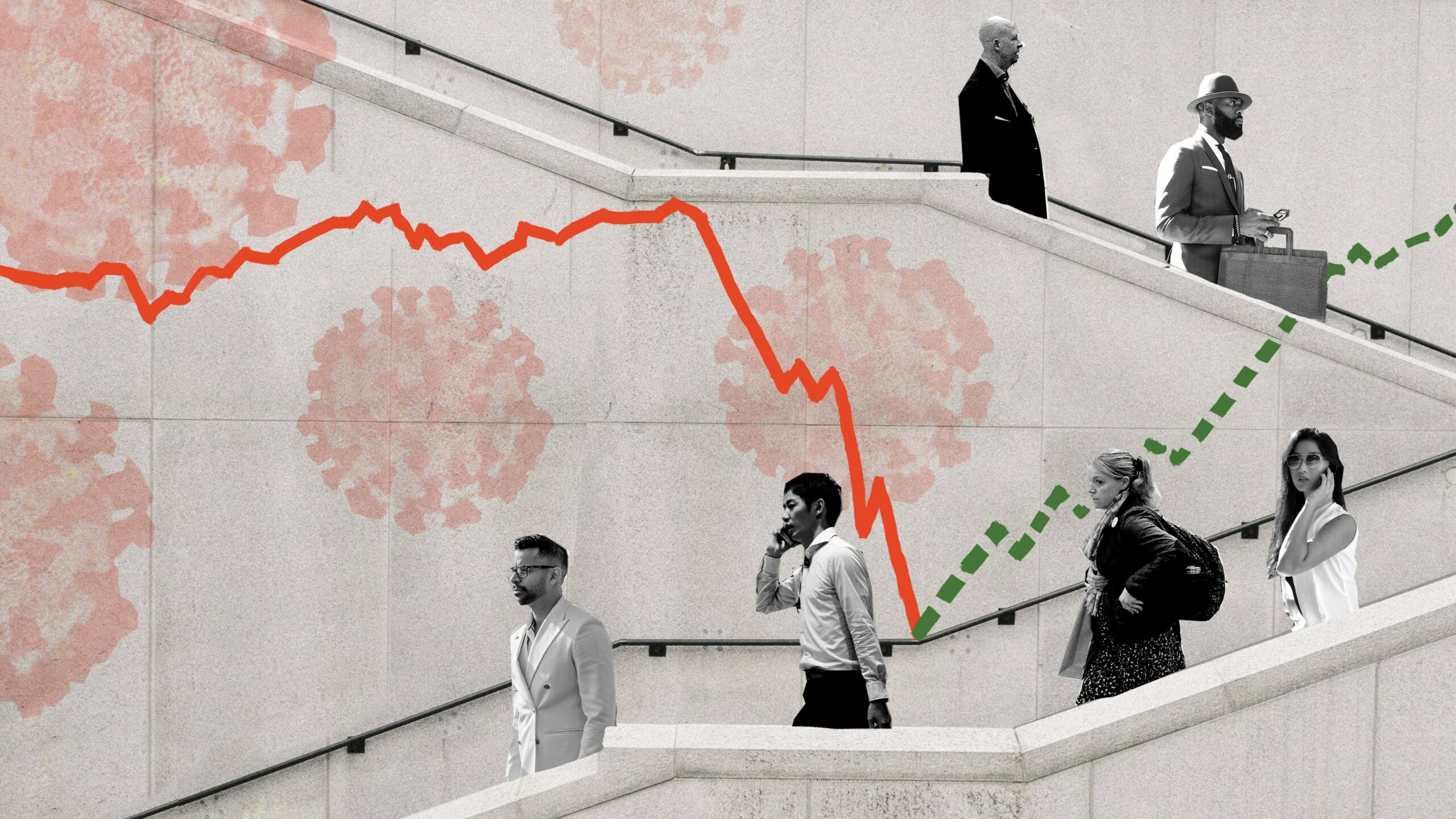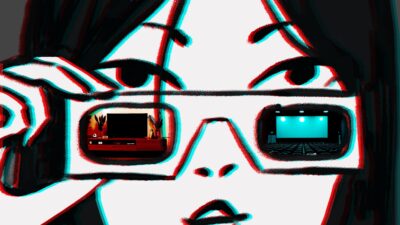Sandra Peter and Kai Riemer

Telehealth on Corona Business Insights
During the COVID-19 pandemic, telemedicine looks like it could lead to a more permanent shift to become a more mainstream part healthcare.
As COVID-19 sets out to change the world forever, join Sandra Peter and Kai Riemer as they think about what’s to come in the future of business.
Shownotes
Telemedicine looks like the future of healthcare
The rise of telehealth in the coronavirus pandemic
Is COVID-19 the tipping point for telemedicine
COVID-19 and collaboration in telehealth
Coronavirus and China’s healthcare system
Australia’s first virtual hospital rolls out for COVID-19 patients
This episode is part of a podcast series covering what COVID-19 will mean for the business world, where we look at the impact on the economy, businesses, industries, workers and society. This is part of our ongoing coverage of the impact of COVID-19 on the future of business.
Follow the show on Apple Podcasts, Spotify, Overcast, Google Podcasts, Pocket Casts or wherever you get your podcasts. You can follow Sydney Business Insights on Flipboard, LinkedIn, Twitter and WeChat to keep updated with our latest insights.
Send us your news ideas to sbi@sydney.edu.au.
Dr Sandra Peter is the Director of Sydney Executive Plus at the University of Sydney Business School. Her research and practice focuses on engaging with the future in productive ways, and the impact of emerging technologies on business and society.
Kai Riemer is Professor of Information Technology and Organisation, and Director of Sydney Executive Plus at the University of Sydney Business School. Kai's research interest is in Disruptive Technologies, Enterprise Social Media, Virtual Work, Collaborative Technologies and the Philosophy of Technology.
Share
We believe in open and honest access to knowledge. We use a Creative Commons Attribution NoDerivatives licence for our articles and podcasts, so you can republish them for free, online or in print.
Transcript
This transcript is the product of an artificial intelligence - human collaboration. Any mistakes are the human's fault. (Just saying. Accurately yours, AI)
Intro From the University of Sydney Business School, this is Sydney Business Insights.
Sandra And this is Corona Business Insights. I'm Sandra Peter.
Kai And I'm Kai Riemer.
Sandra And with everything that's been happening, it's difficult to understand what COVID-19 will mean for the business world. So, in this series we've been unpacking its impact on business, economy, industry, government, workers and society.
Kai This podcast is part of a larger initiative by the University of Sydney Business School. Our COVID business Impact dashboard is a living initiative which we constantly update with insights and resources from academics, from industry experts, from Nobel Prize winners, movers and shakers.
Sandra And of course, you can find all of these resources online at sbi.sydney.edu.au/coronavirus.
Kai And today we talk about how telemedicine or telehealth is evolving with the COVID-19 pandemic.
Sandra So telemedicine, telehealth, the multitude of remote healthcare technologies and services, have been around for a very, very long time. But they've had a huge uptake with millions and millions of people being in lockdown around the world and requiring more healthcare than ever before.
Kai And this is, of course, not just about delivering health care to do with the COVID-19 pandemic, but also to prevent people from having to go to the doctor when their suburb, their city, is in lockdown to deliver any kind of health care that can possibly be delivered by the phone, by a video uplink or other technologies.
Sandra Before we have a look at how telemedicine and telehealth have been transformed through this pandemic, it's worth spending a minute to make sense of what telemedicine and telehealth broadly encompass. Because on the one hand, telehealth can comprise of virtual interactions between individual doctors and other doctors or other nurses and other hospitals at a distance. But it also involves the relationships more traditionally understood as telemedicine, which are between doctors and their patients.
Kai So in the doctor to doctor scenario, we're talking about, say, a hub and spoke hospital where in a central hospital, a number of senior nurses and doctors are working in a telehealth facility to provide emergency consultations to the emergency room in their own hospital or in the decentralised associated hospitals that might be hundreds of kilometres away. And the situation might be that a patient is coming in with an urgent medical problem. The attending nurse presses a button, the screen comes on and a consultation can take place. The doctors in the centralised unit can remote control a high resolution camera that can focus in on the patient. They have access to the medical charts, to the monitoring data for heart rate, oxygen levels and things like that, and can really participate with their expertise in diagnosing the patient to make sure that the appropriate care is delivered in a speedy fashion.
Sandra And interesting anecdote here, even though we're trying to keep this episode short. We must mention that one of the first instances of this operated in the early seventies, and it was actually part of a NASA test to deliver telemedicine in southern Arizona, but which was then later used for developing a tele-ICU service for astronauts on the space station.
Kai And the second and by numbers, much bigger area is, of course, the delivery of telehealth services to patients themselves. And this can start as simple as help lines. For example, in Australia, a service such as Health Direct has delivered services to the general public. We are telling nurses who often work from home to triage calls that are coming in to decide whether a caller should just go to the pharmacy, should see a doctor the next day or present to the emergency room straight away.
Sandra So such services could also be enhanced by a number of devices that can collect patient data. Some of these could be as simple as fitness trackers or smartwatches or blood pressure cuffs, or they could be as complex as heart rate monitors or blood glucose and oxygen monitors.
Kai So this is really the area where patients either receive one on one consultation via the phone, via video uplink, or in the case of outpatients or hospitals or for people with chronic diseases who receive constant monitoring and continuous care and check-ins via electronic devices and electronic means of communication with their dedicated doctors.
Sandra And of course, the lockdown and sheltering in place meant that both of these types of services, so the medical practitioner to medical practitioner, and medical practitioner to patient, really took off over the last few months. And this has happened not only in Australia and the US, but telemedicine services have seen a huge surge in places like China, where China already had over a thousand telehealth companies, including some run by the tech giants like JD.com or Baidu, Tencent, Alibaba.
Kai All of which have their own services JD health, Ali Health or WeDoctor, which is of course run by Tencent, the parent company of WeChat, and for services like JD Health, which already took about 10000 online consultations per day before the pandemic, the pandemic itself meant that that had skyrocketed to about 150 thousand online consultations per day.
Kai So for many of these services, the pandemic presented an opportunity to deliver their services, often for free, to help out in the pandemic. The app Ping An, for example, set up a so-called "antivirus command centre" to dispatch free facemasks around the country. Others treated epilepsy patients for free who could no longer see a doctor to demonstrate to the government that these services are here to stay and to show patients that these are reliable providers of health care with a view to become part of everyday life in China beyond the pandemic.
Sandra And in doing so, also relieve some of the pressure on brick and mortar health care centres. So, for instance, Baidu Health offered online consultations, 24 hours that they're employing over 100000 doctors from across China and then ended up handling almost 55 million enquiries by the end of April, including about half a million enquiries that came from outside of China.
Kai And similarly, here in Australia, concepts that have long been in discussions such as virtual hospitals have during the pandemic seen a rapid acceleration, in some cases an early launch. One of the largest is here in Sydney, the Royal Prince Alfred Virtual Hospital, which during the pandemic has become one of the largest provider of COVID-19 related health. They have treated patients in the hospital, but more importantly, by the end of May, almost 500 patients were treated in their own homes with monitoring devices such as pulse oximeters to measure oxygen saturation levels and heart rates provided by the hospital to make sure that patients are okay. Twice daily video consultations on top of that then ensured that the health practitioners were on top of any deterioration in those patients that were not immediately located in the physical hospital, and also looking after patients who were in mandatory hotel quarantine because they arrived from overseas.
Sandra So clearly in them during the pandemic, we've seen many benefits from telemedicine then telehealth, whether that was in the number of people that have access to health care, whether that was in reduced opportunities for transmission or the speed with which they got access to health care, but also in the costs that the patients incurred, the ability of specialists, doctors to be present in remote locations, sometimes even in different countries, and be involved with the care of patients. Maintaining the momentum that telemedicine has gained is likely to run into some challenges. So we thought we'd have a quick look at those because telemedicine is predicted to become big business in China alone. That's to the tune of about 30 billion dollars a year this year alone.
Kai So one of the challenges, of course, is the efficacy of diagnosis at a distance, either over the phone or with video uplink. So studies claim that only about 40 to 60, 70 percent of all diagnosis can reliably be made via telemedicine or telehealth services. There's another issue that doctors report that these diagnoses also can take much longer than physical diagnosis because know cameras have to be pointed. Patients have to be instructed to do certain things that a medical practitioner can do with one or two expert movements. So that might mess with the business aspect of running a practise, might mess with schedules. The reimbursement of telecom stations might not be as lucrative for doctors, so they might be less inclined to take on these kinds of services. So these are things that needs to be looked into. When these services are being kept as an add on or complement to traditional health beyond the necessity that existed during the pandemic.
Sandra There's also the concern expressed by many involved in rural clinics or community hospitals that this might further put a strain on the medical staffing of these services, since they would have access to specialists who are in a remote location, there would be less of an incentive to invest in having people on-site.
Kai And that's exactly the trade-off that we're talking about here. Is this something that can add to the delivery of health and make existing services better or more convenient for patients? Or will providers give into the temptation to replace rather than enhance services? And, you know, not provide incentives for experts or doctors to move out to work in remote locations and instead draw on these kinds of teleservices.
Sandra And then there is the patient side of the equation. While many of these services work well with patients you already know or you already have a relationship with. It's much more difficult to build relationships in a virtual space. There is also the fact that quite often patients who need most care might be patients from disadvantaged communities who might have less access to technology or to a reliable Internet connection, or indeed, smart devices. There's also the question of the actual infrastructure that is needed to run the services at scale, for instance, China has invested large amounts of money into having the infrastructure that would support the delivery of this service, then familiarising people with this type of service and making that acceptable.
Kai Which brings us to the fact that delivering competent and reliable telehealth services also needs training and new skills on the part of the practitioners. Not only do they need to be able to work these technologies, and they also need to be trained in remote diagnostics, using language, guiding questions to make sure that patients understand what they need to do in order to help with the diagnosis, given that patients are now part of the process of providing data that the doctor or the nurse might need. There's also the fact that providing telehealth can be quite texting mentally because people are being confronted potentially with quite difficult situations. People who might be at risk of self-harming people who are in very difficult remote situations with no immediate physical help. So it's important that there's a support network in place that helps these action is in those situations, but also afterwards with the mental ramifications of being in this role.
Sandra And last but not least, there is the issue of regulation and on having the arrangements in place, for instance, in Australia. There are Medicare arrangements to allow doctors to bill for telehealth and there will be in place until the end of September. But that is up for review. Them getting insurance companies on board and also pharmacies on board or a full service can be delivered takes creating the frameworks and the right incentive structures by governments.
Kai And this is where we want to leave it. So the hope is that coming out of the pandemic, we might be able to keep the best parts of what has been successful, tele and virtual health services, and to make sure that frameworks are in place to mitigate some of the challenges that we mentioned.
Sandra Until next time. This has been Corona Business Insights.
Kai Thanks for listening.
Sandra Thanks for listening.
Outro From the University of Sydney Business School, this is Sydney Business Insights, the podcast that explores the future of business.
Close transcript






